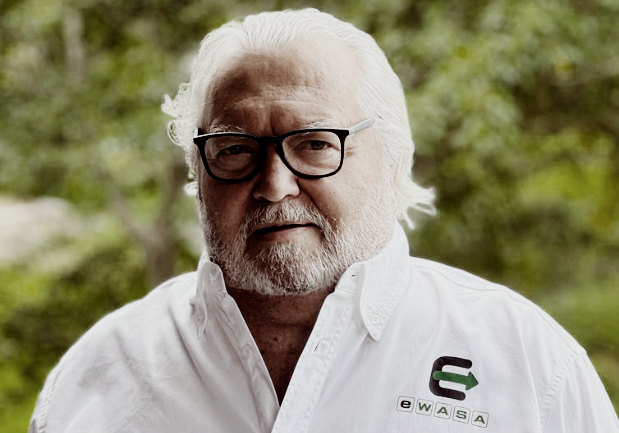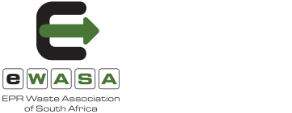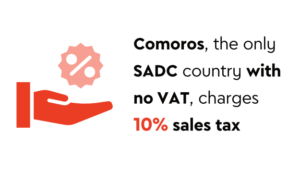According to the 2018 State of Waste report, South Africa generates 122 million tons of waste annually, of which at least 90% goes to landfills or illegal dump sites. Effective waste management is a global concern, prompting many nations to enforce extended producer responsibility (EPR) policies that hold producers accountable for the waste their products generate.
South Africa is one of the latest to adopt this industry-managed model, adding new EPR regulations to the National Environmental Management: Waste Act (NEMWA) in 2020. EPR is a policy designed to protect the environment and encourage a circular economy. It calls on manufacturers, importers, distributors and all members of the value chain to take responsibility for the collection, treatment, refurbishment and recycling of their products at the post-consumer stage.
South Africa’s new EPR regulations require all producers to register with the Department of Forestry, Fisheries and the Environment (DFFE), and to establish and implement an EPR scheme. Producers may also join an existing EPR scheme or appoint an autonomous producer responsibility organisation (PRO) to implement one on their behalf.
EPR SCHEMES
An EPR scheme is a system that outlines how a producer plans to take accountability for a product at the end of its life cycle. These schemes must include the entire value chain, encouraging producers to contract with downstream stakeholders to recover, collect, sort and recycle waste. The department also calls for the integration of informal waste pickers into EPR schemes, which should prioritise job creation and BEE transformation.
An EPR scheme must support social cohesion, inclusive economic growth and decent work creation throughout the value chain. They must facilitate product life-cycle assessments to identify design and production opportunities that could reduce waste and natural resource consumption, and improve product recyclability. All EPR schemes in South Africa must include actionable measures for cleaner production; waste reduction; reusing materials; recycling; recovering waste for beneficial use; waste treatment; responsible disposal; secondary material usage; minimum recycled-content standards; and waste recovery rates.
Producers must also report the quantities of waste (in tons) they generated, collected, diverted from landfill, exported and disposed of to the South African Waste Information System once a year. Furthermore, the DFFE requires internal and external financial audits and performance reviews to evaluate the validity of an EPR scheme.
‘If an EPR scheme is working well, it is able to bring together all the actors responsible for sustainable waste management, such as producers, importers, distributors, recyclers and waste pickers,’ says Keith Anderson, CEO of the EPR Waste Association of South Africa (eWASA). ‘This is what eWASA, with 17 years’ experience, has been striving to achieve.’
FUNDING AN EPR SCHEME
Each producer is responsible for funding its own EPR scheme. A PRO may also collect fees from its members to pay for waste recovery, collection and recycling, plus administration, auditing and consumer-awareness campaigns. EPR fees are directly proportionate to the cost of recovery for each product category, which may be affected by weight, ease of recyclability and demand for the recycled material.

IMPLICATIONS OF THE EPR REGULATIONS ACCORDING TO INDUSTRY
The DFFE released EPR regulations for producers in various industries in November 2020. Any person or brand owner who manufactures, converts, refurbishes or imports products from the following categories for commercial purposes must establish or commit to an EPR scheme within three months of commencing operations.
‘An additional advantage of the EPR regulations is that it caters to aggressive development and implementation of BEE,’ Andile Tlhoaele, non-executive chair of eWASA. ‘This is one of eWASA’s core values.’
ELECTRICAL AND ELECTRONIC EQUIPMENT
The department defines EEE as ‘equipment that is dependent on electric currents or electromagnetic fields to work properly, and equipment for the generation, transfer and measurement of such currents and fields and designed for use with a voltage rating not exceeding 1 000 volts for alternating current and 1 500 volts for direct current’.
The department categorises EEE into four classes, namely large equipment (any external dimensions exceeding 100 cm); medium equipment (external dimensions between 50 cm and 100 cm); small equipment (external dimensions less than 50 cm); and batteries. Regulations require all industry producers to increase their end-of-life EEE collection and recycling rate by 30% per annum for the first five years after implementing an EPR scheme. EEE targets are available in Government Gazette No 43880.
LIGHTING
The DFFE defines lighting as ‘electrical or electronic equipment used for producing artificial light or illumination, including any peripherals of the lighting bodies such as luminaires, switch components, ballasts, fixtures and modules’. EPR includes the following lighting products: gas discharge lighting (for example, fluorescent lights); light-emitting diodes; signal and signage lighting and their associated equipment; luminaires, light fixtures, and their electrical components; laser, pixel and ultraviolet irradiation or ultraviolet germicidal irradiation; automotive lighting and luminaires; incandescent (filament) light bulbs; and off-grid solar-powered lighting.
The DFFE published in-depth collection, recovery and recycling targets for lighting products to guide producers during the first five years of EPR scheme implementation. These targets typically increase by about 5% to 10% each year and are available in Government Gazette No 43881.

PAPER AND PACKAGING
The department defines packaging as ‘any material, container, wrapping or corrugated case used for the containment, transport, handling, protection, promotion, marketing or sale of any product or substance’. EPR regulations include primary, secondary and tertiary packaging materials. They exclude shipping containers, timber and textile packaging, plastic pallets and industrial bulk containers exceeding 1 000 litres. The EPR regulations also include all writing, printing and wrapping paper.
Producers of the following product categories must implement an EPR scheme: paper and paper packaging material; printed and unprinted plastic packaging; biodegradable and compostable packaging; single-use plastics; single-use compostable and biodegradable plastics; glass bottles and jars; and metal packaging (steel, tinplate and aluminium).
The DFFE set collection and recycling targets for each category to assist producers during the first five years of their EPR scheme implementations. It also published recyclate content targets for glass, PET, rigid polyolefin and single-use plastics to encourage more eco-friendly product design. In addition, the department calls on producers to reuse 40% of their glass packaging products by year five of an EPR scheme. All paper and packaging targets are available in Government Gazette No 43882.
JOINING A PRO
A PRO is an autonomous NPO that helps producers meet their EPR targets by developing and implementing industry-compliant EPR schemes, according to the 2020 EPR regulations.
As a registered PRO, eWASA – with 17 years of experience – has a leading representation of some of South Africa’s largest household electronic and electrical, paper and packaging, and lighting producers since 2005.
















